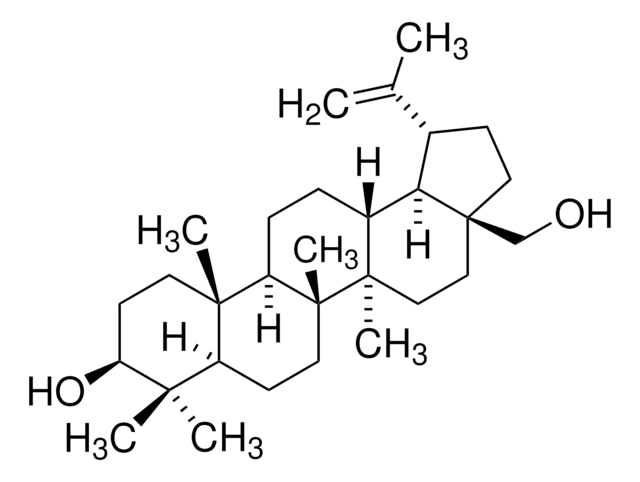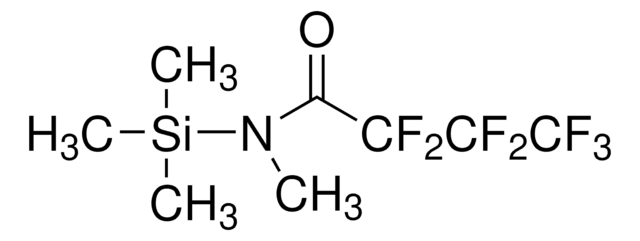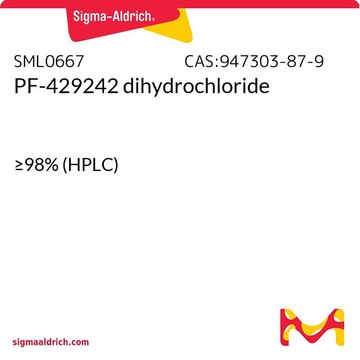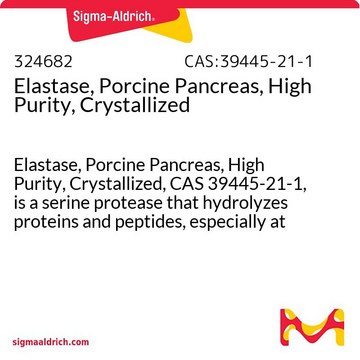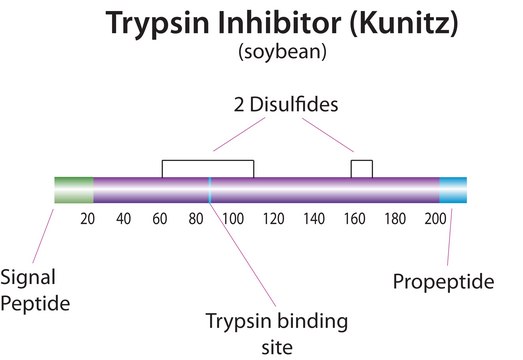569371
SREBP Processing Inhibitor, Betulin
The SREBP Processing Inhibitor, Betulin, also referenced under CAS 473-98-3, controls the biological activity of SCAP (SREBP cleavage activating protein). This small molecule/inhibitor is primarily used for Cell Signaling applications.
别名:
SREBP Processing Inhibitor, Betulin, Lup-20(29)-ene-3β,28-diol, Sterol Regulatory Element Binding Protein Processing Inhibitor, Betulin
登录查看公司和协议定价
所有图片(1)
About This Item
推荐产品
质量水平
方案
≥95% (NMR)
表单
powder
制造商/商品名称
Calbiochem®
储存条件
OK to freeze
颜色
off-white
溶解性
DMSO: 3.5 mg/mL
运输
wet ice
储存温度
2-8°C
SMILES字符串
O[C@@H]1C([C@H]2[C@@]([C@@H]3[C@]([C@]4([C@@H]([C@@H]5[C@@](CC4)(CC[C@H]5C(=C)C)CO)CC3)C)(CC2)C)(CC1)C)(C)C
InChI
1S/C30H50O2/c1-19(2)20-10-15-30(18-31)17-16-28(6)21(25(20)30)8-9-23-27(5)13-12-24(32)26(3,4)22(27)11-14-29(23,28)7/h20-25,31-32H,1,8-18H2,2-7H3/t20-,21+,22-,23+,24-,25+,27-,28+,29+,30+/m0/s1
InChI key
FVWJYYTZTCVBKE-ROUWMTJPSA-N
一般描述
A cell-permeable pentacyclic triterpenoid from birch bark extract that interacts with SCAP (SREBP cleavage activating protein) and prevents SREBP (sterol regulatory element-binding protein) Golgi proteolytic activation (1 to 13.55 µM in Rat hepatocytes CRL-1601) via a similar mechanism as oxysterols by inducing the association of SCAP with Insig-1 (insulin-induced gene-1), thereby causing SCAP-SREBPs complex ER retention. Unlike oxysterols, Betulin does not activate LXR to induce concomitant HMGCR (HMG-CoA reductase) degradation and SREBP-1 up-regulation. While both Betulin and HMGCR inhibitor Lovastatin (Cat. No. 438185) inhibit cellular cholesterol synthesis (by ~70% in CRL-1601 cultures with respective compound at 13.55 and 1 µM concentration), only Betulin suppresses cellular fatty acid synthesis (by ~55% at 13.55 µM in CRL-1601). Betulin is shown to exhibit comparable in vivo efficacy as Lovastatin (both dosed at 30 mg/kg/day with chow) in ameliorating high fat/cholesterol diet-induced obesity (% fat/lean tissue ratio increase from non-fat diet mice = 167, 44, and 33 in mice consuming fat diet alone, with Lovastatin, with Betulin, respectively). However, only Betulin is demonstrated to lower fasting blood glucose and insulin levels and reduce fat cell size in white adipose tissue in high fat diet mice. Fatostatin (Cat. No. 341329) in comparison does not target SCAP via sterol-binding site, nor does it induce SCAP binding to Insig-1.
警告
Toxicity: Toxic (F)
其他说明
Tang, J.J., et al. 2011. Cell Metab.13, 44.
法律信息
CALBIOCHEM is a registered trademark of Merck KGaA, Darmstadt, Germany
储存分类代码
11 - Combustible Solids
WGK
WGK 3
Bryan McClellan et al.
Breast cancer : basic and clinical research, 16, 11782234221111374-11782234221111374 (2022-08-30)
The objective of this study is to determine the impact of exposure to obesity-related systemic factors on fatty acid synthase enzyme (FASN) expression in breast cancer cells. MCF-7 breast cancer cells were exposed to sera from patients having obesity or
我们的科学家团队拥有各种研究领域经验,包括生命科学、材料科学、化学合成、色谱、分析及许多其他领域.
联系技术服务部门